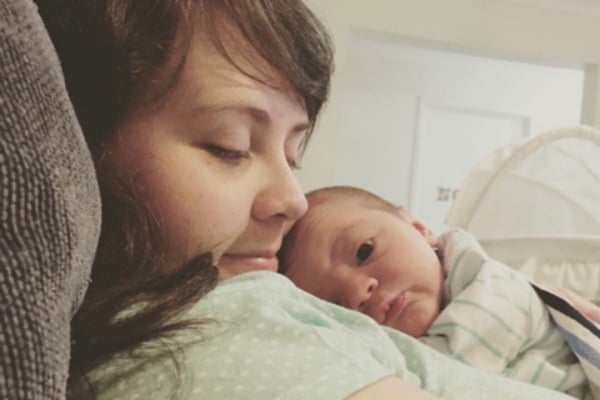
For Queensland’s Rhiannah Pohlman, it’s taken a long time to be able to tell her birth story without crying. But it’s a story she wants to tell.
When Pohlman gave birth to her son Noah, she suffered a fourth degree tear during delivery. A fourth degree tear is the worst kind, going through the perineum, all the way from the vagina to the anal canal. Today, four years later, she’s still suffering the effects.
“I deal with faecal incontinence and flatulence incontinence,” Pohlman tells Mamamia. “It really disrupts your quality of life.”
Mums and non-mums answer questions about childbirth. Post continues below.
She says on bad days, something as simple as a trip to the shops is too much for her.
“Trying to go shopping is horrible because it leaks and it’s painful. If I have a lot of leakage that day and I’m walking around, it’s basically like nappy rash.”
The flatulence is a problem because it’s “so taboo”.
“I can’t not fart, so trying to hold it in – because you want to respect people around you – that’s difficult and it’s painful. You get really bloated.”
Pohlman also has a fistula – a hole between the vagina and rectum – which causes “poo leaking out the vagina sometimes”.

Top Comments
I really feel for you, that sounds like a horrible experience and one that you Wouldn’t wish upon anyone. All the very best with your next birth and baby.
I felt like I was really well researched going into labour with my first and after being fully dilated and squatting down pushing for 3 hours the mention of forceps got me in a bit of a panic (I was a forcep first baby and my mum had prolapsed after me) and I said let’s just skip to the c section. Although my daughter wasn’t a huge baby (8lb10oz) her head circumference was in the 90th percentile or so. And although my decision is not to everyone’s taste, I’m so glad I got to make it.
I tell all my friends that are having kids for the first time to really put some research into all of the pain relief options and delivery methods and interventions that may occur so you can make informed decision about your body. I didn’t have any set birth plan but felt prepared for whatever was going to come my way. A few friends have told me that they don’t want to know and they’ll just see what happens- and some have ended up feeling traumatised mentally (and physically) because they were not prepared and so became so scared by the situation.
You’re so right about research, I just wish we could get the message across to all ladies- the info is there, go and search for it!
OMG.... please get a 2nd and 3rd opinion from other surgeons.... this should surely be a fixable and highly improbable situation!!!!